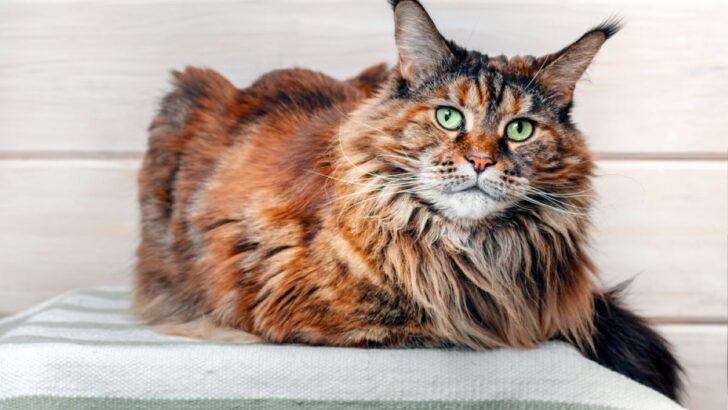Myths and narratives galore surround the mysterious Maine Coon. But, what’s the truth? What’s the allure of the gentle giants that make humans spend thousands and thousands of dollars to bring them home, dress them up, and cuddle them? What’s the difference between a European Maine Coon and an American one?
Bet you didn’t see that one coming, right? Before we go further, you need to know that there are two different types of Maine Coons – a European and an American. That’s right, these two are not the same even though they’re known to share quite a few features.
Whether we’re referring to their big-boned build, soft and sumptuous coats, whispy whiskers, or distinctive personalities, these two types of Maine Coons are super similar. We’re pretty sure that the differences between the two come down to the country of origin – but more on that further down the article.
Maine Coons – European or American – are affectionate, appreciative pets that earned the title of gentle giants for a reason.
No wonder they’re one of the most sought-after breeds around the world with pet parents fighting to get hold of one and spend every moment of free time snuggling with them. Need we mention that Coons’ love language appears to be touch!?
Whether you’re planning on adopting one of these bad boys or trying to start a breeding business, continue reading to uncover the surprising deets about European and American Maine Coons.
1. What’s the backstory of European Maine Coons?
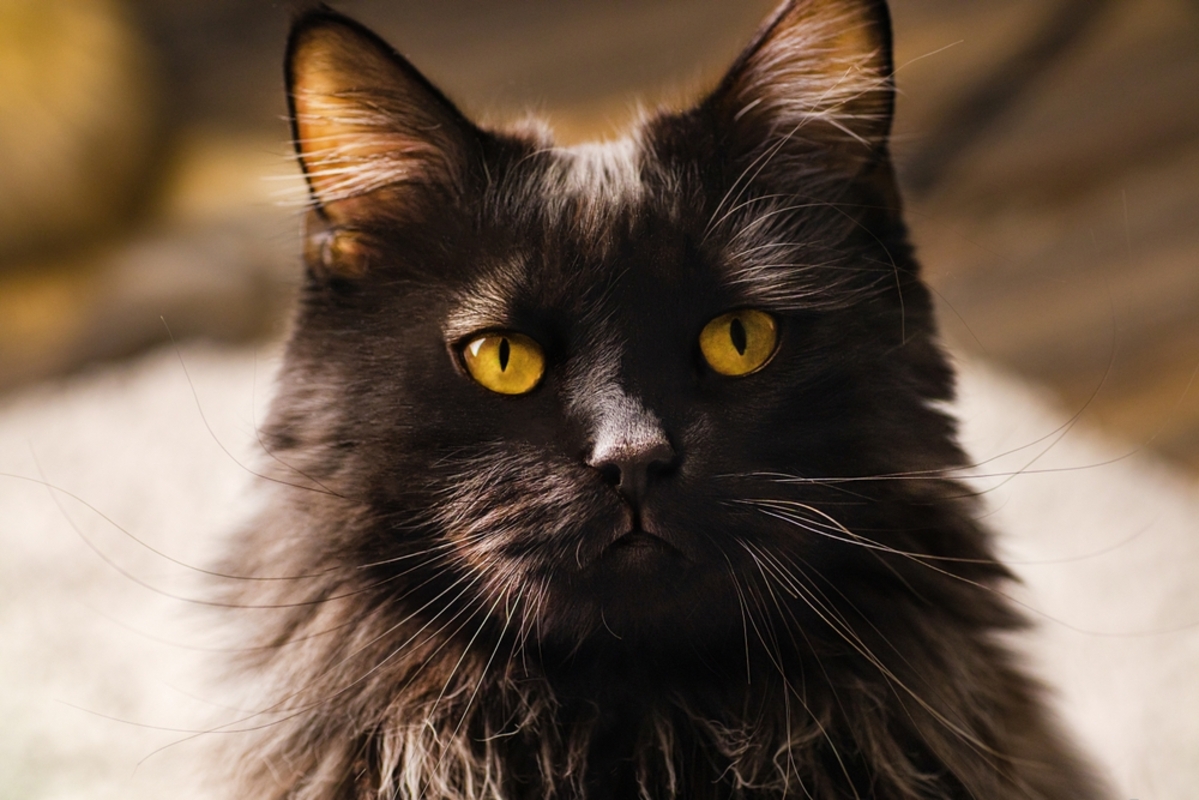
Now, European Maine Coons and American Maine Coons belong to the same breed. What does that mean? While the two might appear different because of contrasting facial features, both came from the same Maine Coons that appeared around the 1800s.
American breeders continued breeding Maine Coons according to the same standards that were accepted by the Cat Fanciers’ Association (CFA).
European breeders, on the other hand, noticed there was a demand for a more extreme, more exaggerated appearance, which prompted them to start breeding Maine Coons themselves.
While European Maine Coons don’t meet the breed’s standard, these beautiful beasts do meet the standard of the International Cat Association (TICA), the world’s largest genetic cat registry, and the Fédération Internationale Féline (FIFE), an organization that spans South America, Asia, and Europe.
We do need to mention that European breeders and batteries don’t always breed Maine Coons to create them with an unbalanced, untamed appearance.
2. What do European Coons look like?
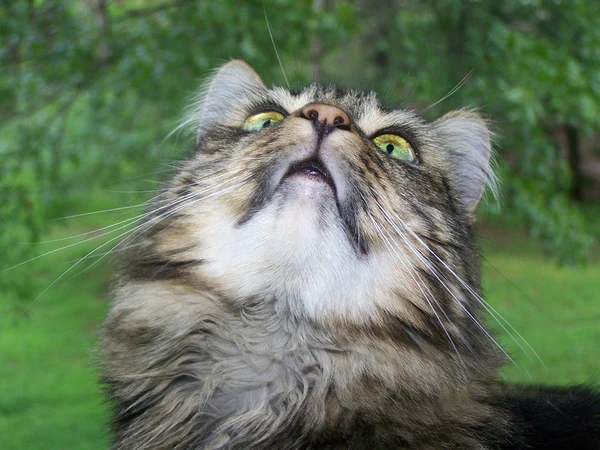
Okay, we teased you enough. What’s so different about European Maine Coons that they’re separated from the rest of the breed? We mentioned that they don’t meet the breed’s standards because they’re created to stand out from the rest. Why’s that?
European Coons are meant for pet parents who prefer to own a wild cat without actually owning a wild cat. Because they’re much more formidable than American Coon – they’re bigger, fluffier, and also heavier.
But they’re much more undone and unkempt, too, with a messy mane, a sharp, sizeable head, a square muzzle, and tufts of floof sticking out from pretty much everywhere. They’re adorned with higher cheekbones (Bella Hadid, who?), lynx-like ears, and the wispiest whiskers you’ve ever seen.
European Maine Coons don’t resemble purebred cats because they’re created to appear undomesticated and untamed. We’re not sure how that’s even possible, but they’re wild from head to toe.
When you compare them to American Maine Coons, they look like they escaped the zoo and came straight to your door.
3. Naughty or nice: What to expect from them?
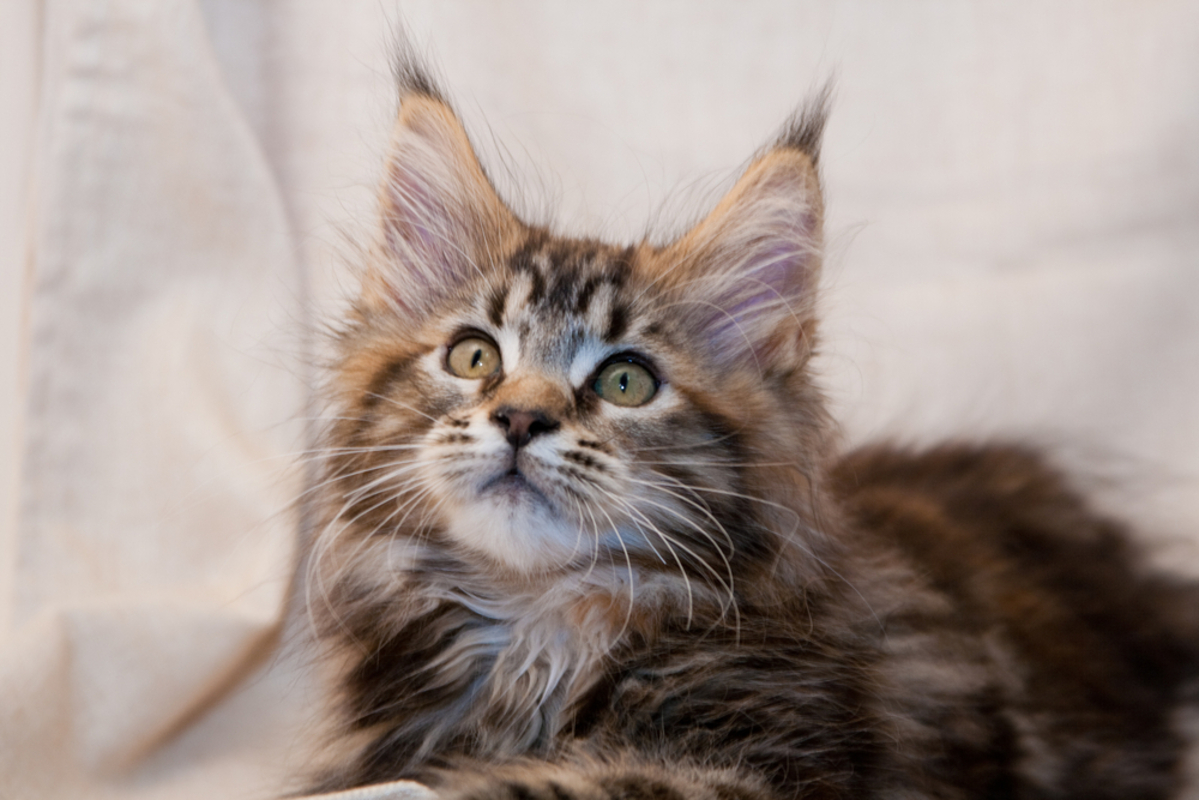
European Maine Coons might look like they could scratch your eyes out and shred you to pieces, but they’re the biggest sweethearts of the feline world. We know you’re wondering whether the grass is greener on the other side of the pond, but we’re on the fence, too.
Both European and American Maine Coons are born to be the best thing that’s ever happened to you.
European Coons are friendly – they’re keen on hanging out with humans and aren’t afraid of meeting your friends, snuggling with them on the sofa while you prepare snacks, and even entertaining the little humans while you have your grown-up conversation.
Moreover, they’re okay with you spending some time outside while you’re working or running errands. But they’re much happier when the two of you are together.
Oh, yes, and they’re talkative, too. European Maine Coons have a lot to say – they don’t shy away from meowing, chirping, and trilling at 3 a.m. Yet at the minimum, you get to brush up on your Spanish.
1. How did American Coons come to be?
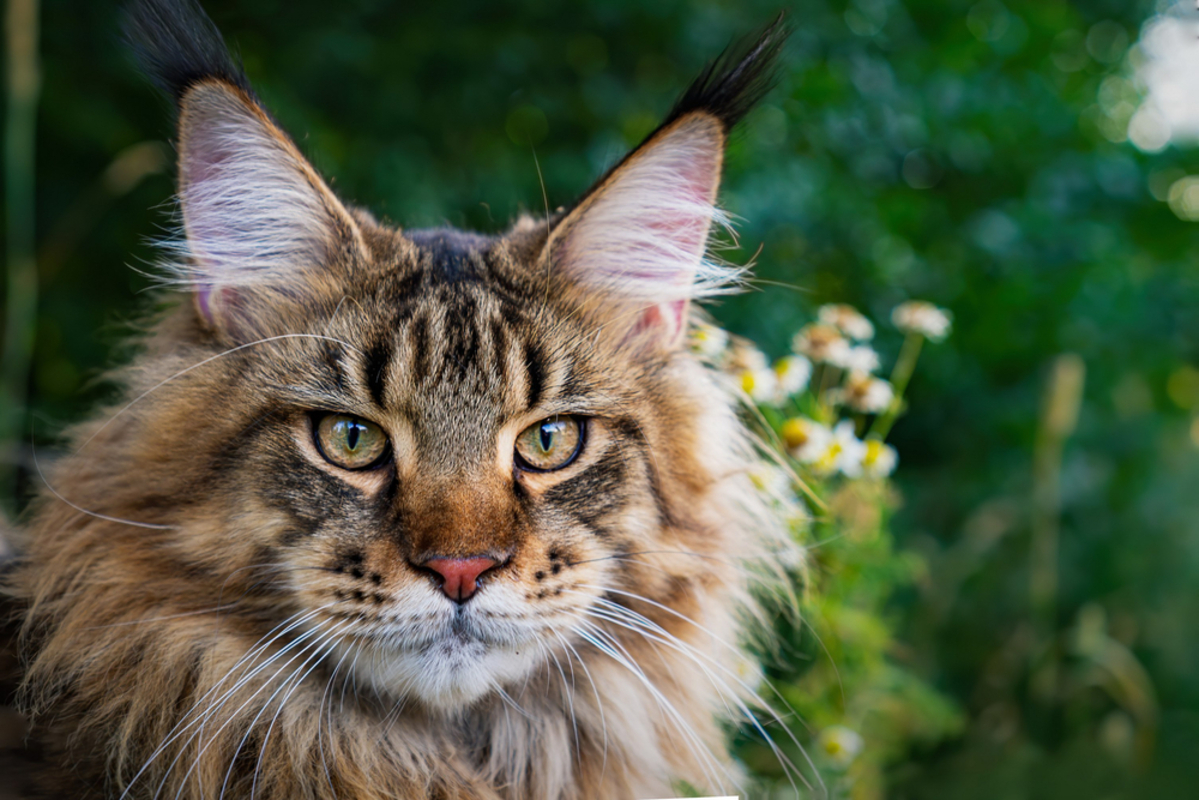
Oh, you wouldn’t believe the myths and mysteries that surround both European and American Maine Coons. Nowadays, we know that European Maine Coons are bred around Europe.
But before there was a severance between the two types, Maine Coons appeared naturally around the area of North East America. The drama, right?
Now, turns out nobody knows the truth of how Maine Coons came to be, but that doesn’t mean that there aren’t theories.
One theory suggests that Coons are a cross between a raccoon and a cat. With the fluffy tails and whispy ears, who wouldn’t think that? While we’re rooting for a cuddly raccoon, we’re pretty sure that the two cannot be combined.
On the other hand, we can’t pretend that there wasn’t a pawsibility that Maine Coons came from Marie Antoinette’s Turkish Angora cats.
When Marie was trying to flee France, she didn’t want to part with her fluffy friend, so she decided to board them on the craft. While Marie never made the craft, her Angoras did – and they made sure to mate with moggies the moment they reached Maine.
On top of that one, though, there’s a theory that keeps on coming up whenever there’s a conversation about Maine Coons. A sailor by the name of Charles Coon (familiar, right?) sailed the New England coast with a bunch of cats because he wasn’t keen on human companions. And when these cats mated with one another, the offspring became known as “Coon’s kittens.”
At the end of the day, we’re happy to have them around, whatever the truth might be.
2. How are American Coons different from European ones, appearance-wise?
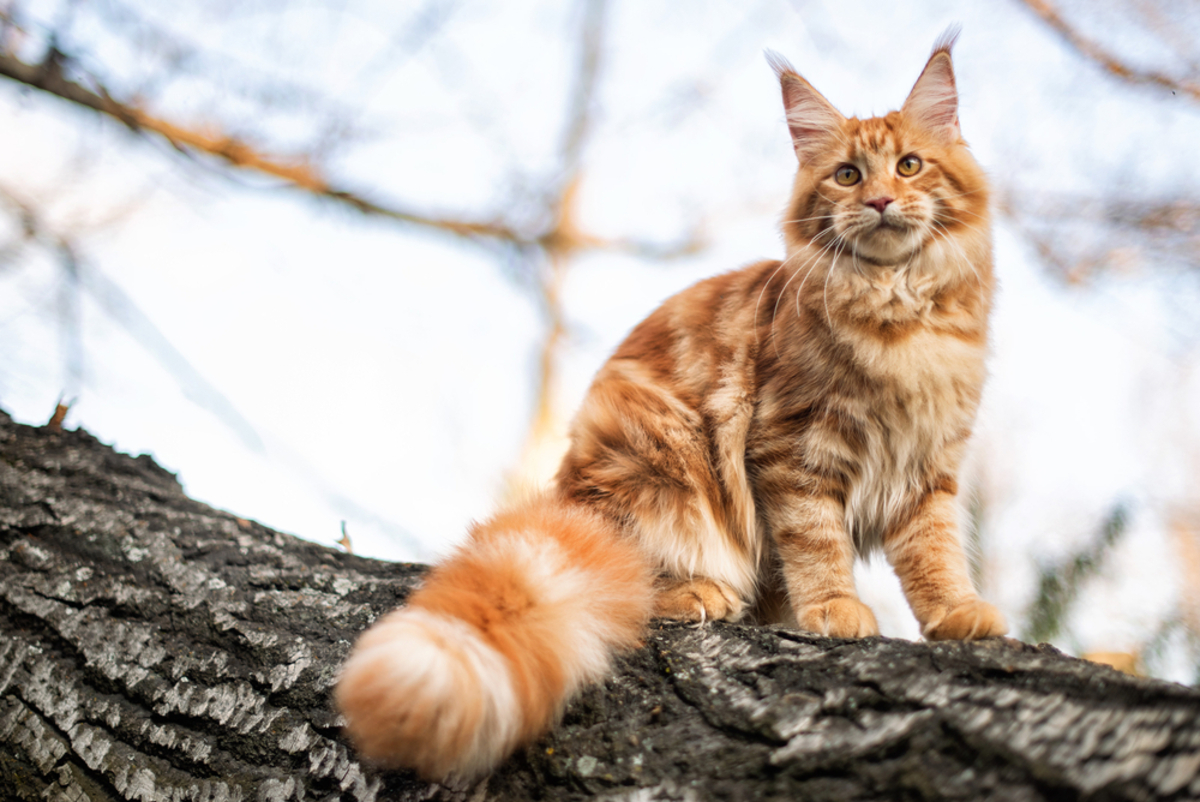
When trying to settle the European Maine Coon vs. American Maine Coon debate, appearance seems to be the way to go. While the two types of Coons are similar, they’re quite different when you take a good look at them.
Right away, American Maine Coons are smaller than European ones. European breeders tend to focus on fostering extreme features, sharp edges, and a sense of “that appears to be a wild cat” whenever you’re around a Coon.
But, American Maine Coons are smaller, softer, and much gentler because the breeders focus on a “balanced” appearance. The difference might not be apparent with every Coon, though – some are smaller and some are bigger, depending on nutrition, health, and physical activity.
When you observe an American Maine Coon’s face, you’ll notice a rounded head, smaller ears without the whispy tufts, and even a shorter tail.
Then there’s the snout. American Coons are known to have a narrow, natural-looking snout compared to European ones. No wonder American Maine Coons are more “symmetrical,” too. Regardless, they are the softest, smooch-worthy cats out there.
3. What’s their personality like?
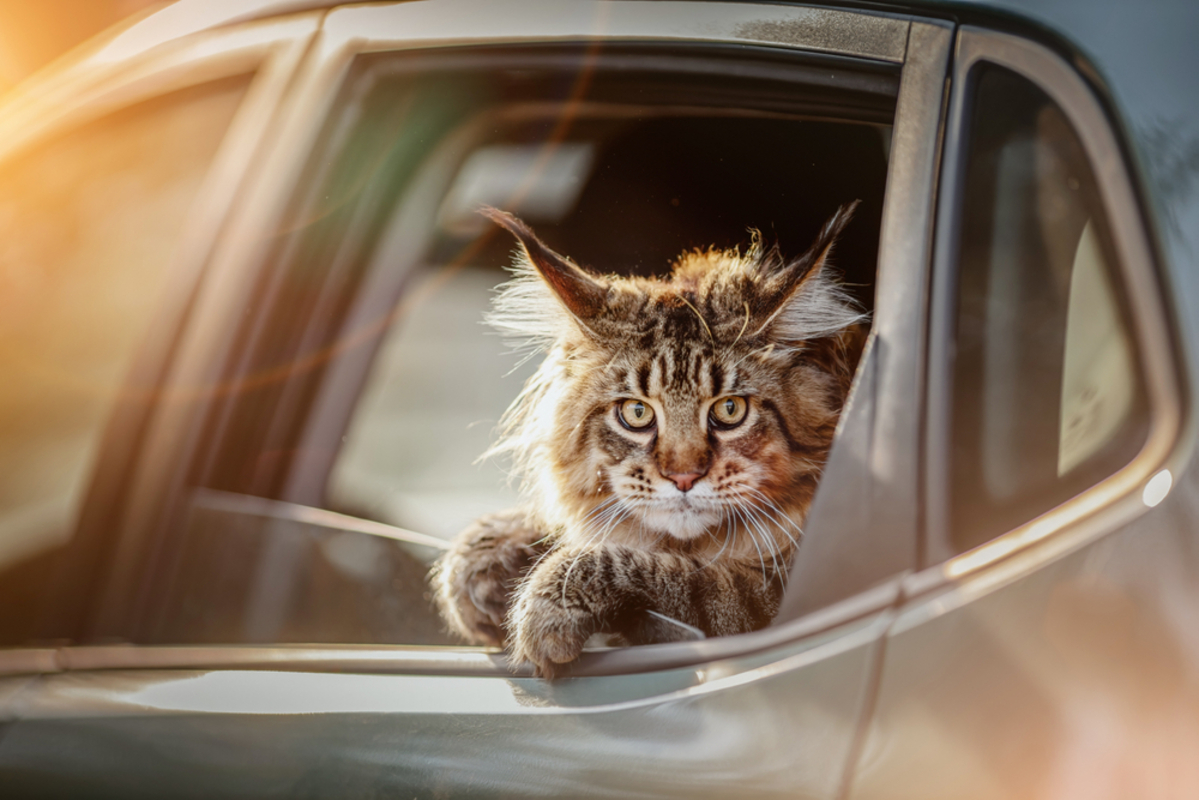
American Maine Coons are the opposite of aggressive, we can tell you that much!
Whether they’re annoyed by something you’re doing, frustrated because you’re rubbing them the wrong way, or hungry because you haven’t fed them for more than 15 minutes, chances are they’re going to meow at you and walk away.
We’re positive that most Maine Coons adore humans so much that they’re willing to follow them around, wait for them to come back from work, and snuggle with them on the sofa.
Sure, they’ll never hang out on top of you because they’re too freakin’ heavy. But that doesn’t mean they won’t shower you with affection and attention.
European and American Maine Coons aren’t that different in the temperament department. Both are energetic, easy-going, and warm-hearted.
Before you choose between the two, know that both of them are super smart, simple to teach pretty much anything, and obsessed with treats. This means they’ll do everything you want them to do – for a bite of your burrito.
We can’t stress enough how non-aggressive Maine Coons are. Come on, the two won’t even protest when you pick them up, smooch them, and put them down without consent. What’s not to adore?
